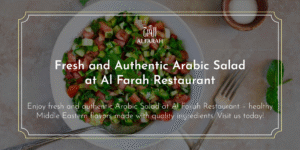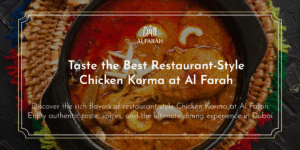Introduction:
Lebanese cuisine is known for its rich flavors, fresh ingredients, and vibrant colors. One of the highlights of this culinary tradition is the mezze, a selection of small dishes served as appetizers or even as a complete meal. Join us on a mouthwatering journey as we explore the delights of Lebanese mezze and uncover the unique flavors that make it an unforgettable experience.
Introduction to Mezze: Small Bites, Big Flavors
Mezze, a fundamental aspect of Lebanese cuisine, consists of a diverse selection of small dishes that are packed with big flavors. Derived from the Arabic word meaning “to savor in small bites,” mezze embodies the Lebanese philosophy of hospitality and sharing. It offers a unique culinary experience by bringing together a variety of flavors, textures, and aromas in a single spread.
Unlike a traditional Western-style appetizer, mezze is not just a precursor to the main course but can also be enjoyed as a complete meal in itself. It encourages communal dining and fosters a sense of togetherness as people gather around a table to sample and share these delightful bites.
Mezze is characterized by its wide range of dishes, each offering a distinct taste and culinary experience. From creamy dips like hummus and baba ghanoush to vibrant salads like tabbouleh, mezze showcases the richness of fresh ingredients and the artful combination of herbs, spices, and seasonings.
What makes mezze truly special is the harmony of flavors achieved by combining different dishes. The tanginess of lemon juice, the earthiness of olive oil, the creaminess of tahini, and the boldness of garlic come together to create a symphony of tastes that awaken the palate.
The small size of mezze dishes allows diners to explore a variety of flavors without feeling overwhelmed. Each bite is carefully crafted to offer a burst of taste, whether it’s the crispiness of falafel, the smoky notes of grilled eggplant in moutabbal, or the savory filling of kibbeh.
Mezze also reflects the influence of Mediterranean and Middle Eastern cuisines on Lebanese gastronomy. It showcases the region’s abundant use of fresh herbs, vegetables, legumes, and aromatic spices. The use of simple yet high-quality ingredients ensures that every bite is a celebration of authentic flavors.
In Lebanese culture, mezze is not merely a culinary experience but a social one as well. It encourages conversation, laughter, and the sharing of stories while enjoying the delightful array of dishes. Mezze transcends boundaries and brings people together, fostering a sense of warmth and hospitality that is characteristic of Lebanese culture.
So, if you’re ready for a gastronomic adventure, indulge in the world of Lebanese mezze. Let the small bites transport you to the vibrant streets of Lebanon, where the flavors dance on your taste buds, leaving you craving for more.
Hummus: The Creamy Classic
Hummus is a creamy classic in Lebanese cuisine and a beloved staple in mezze spreads. This delectable dip is made from pureed chickpeas, tahini (sesame seed paste), garlic, lemon juice, and olive oil.
The process of making hummus begins with cooking and softening the chickpeas, which are then blended together with tahini, garlic, and lemon juice. The tahini contributes a nutty flavor and smooth texture to the dip, while the garlic adds a hint of pungency and depth. The lemon juice provides a tangy and refreshing element, balancing the richness of the other ingredients.
The final touch is a drizzle of high-quality olive oil, which not only enhances the taste but also adds a silky finish. The result is a velvety, creamy dip with a mild and pleasing flavor profile.
Hummus is typically served as a dip alongside warm pita bread, fresh vegetables, or even falafel. Its versatility extends beyond mezze platters and is often used as a spread in sandwiches or as a topping for salads. Its popularity has transcended borders and can be found in various cuisines worldwide.
What makes hummus so appealing is not only its smooth and creamy texture but also its nutritional value. It is a good source of plant-based protein, fiber, healthy fats, and essential minerals. Additionally, chickpeas, the main ingredient, are known for their beneficial impact on heart health and blood sugar control.
Whether you’re indulging in traditional Lebanese cuisine or exploring global flavors, hummus is a delightful and nutritious choice that is sure to please your taste buds. Its simplicity, versatility, and the irresistible combination of flavors make it a true creamy classic in the world of mezze.
Tabbouleh: A Fresh Herb Salad
Tabbouleh is a popular Lebanese mezze dish that stands out for its vibrant colors and fresh flavors. It is a refreshing herb salad that combines finely chopped parsley, mint, bulgur wheat, tomatoes, onions, lemon juice, and olive oil.
The base of tabbouleh is parsley, which gives the salad its bright green color and a distinct herbal taste. The parsley is finely chopped to create a delicate texture and ensure that its flavor is evenly distributed throughout the dish.
Mint is another key ingredient in tabbouleh, providing a cool and refreshing flavor that complements the parsley. The mint leaves are finely chopped or torn into small pieces and added to the salad, enhancing its aromatic profile.
Bulgur wheat, a staple in Middle Eastern cuisine, is an essential component of tabbouleh. It adds a pleasant nutty taste and chewy texture to the salad. The bulgur wheat is soaked in water or vegetable broth until it softens before being combined with the other ingredients.
Tomatoes are added to tabbouleh to provide juiciness and a touch of sweetness. They are diced and mixed with the herb mixture, adding a vibrant red color to the dish.
Onions add a crisp texture and a mild, tangy flavor to tabbouleh. They are finely chopped and incorporated into the salad, providing a subtle bite.
To bring all the flavors together, tabbouleh is dressed with a mixture of lemon juice and olive oil. The lemon juice adds a refreshing tanginess, while the olive oil contributes a smooth and rich quality to the salad.
Tabbouleh is traditionally served chilled and can be enjoyed as a side dish or as a main course. It is often accompanied by fresh lettuce leaves or served with pita bread for scooping. The combination of fresh herbs, juicy tomatoes, and tangy dressing makes tabbouleh a light and refreshing salad that is perfect for warm weather or as a healthy addition to any meal.
Falafel: Crispy and Savory
Falafel is a beloved Lebanese mezze dish that offers a delightful combination of crispiness, savory flavors, and Middle Eastern spices. These deep-fried balls or patties are traditionally made from ground chickpeas or fava beans, mixed with herbs, spices, and other ingredients.
Falafel’s key ingredient, chickpeas or fava beans, provides a hearty and protein-rich base. The legumes are soaked, ground, and mixed with a variety of seasonings and aromatic herbs such as parsley, cilantro, and garlic. These ingredients infuse the falafel with a fragrant and savory taste that is characteristic of Lebanese cuisine.
Spices play an important role in giving falafel its distinctive flavor. Commonly used spices include cumin, coriander, and paprika, which add depth and complexity to the dish. The spices also contribute to the earthy and warm notes that make falafel so satisfying.
Once the chickpea or fava bean mixture is prepared, it is formed into small balls or patties and deep-fried until golden brown. The frying process gives falafel its irresistible crispy exterior while maintaining a tender and moist interior. The result is a contrast of textures that enhances the overall eating experience.
Falafel is often served as part of a mezze spread, alongside other Lebanese appetizers. It is typically enjoyed by placing the falafel in a warm pita bread or flatbread, along with a variety of accompaniments. Popular additions include tangy tahini sauce, creamy yogurt sauce, pickled vegetables, fresh tomatoes, cucumbers, and crisp lettuce. The combination of these ingredients creates a harmonious balance of flavors, textures, and colors.
Lebanese falafel is a versatile dish that can be enjoyed as a standalone appetizer, a filling in sandwiches or wraps, or even as a protein component in salads. Its crispy and savory nature, along with the aromatic spices, make it a delightful addition to any Lebanese mezze spread. Whether you’re a vegetarian or simply looking for a delicious and satisfying dish, falafel is a must-try when exploring the delights of Lebanese cuisine.
Baba Ghanoush: Smoky Eggplant Delight
Baba Ghanoush is a delectable Lebanese mezze dish that showcases the rich flavors of eggplant. It is a smoky and velvety dip made from roasted eggplant, tahini (sesame paste), garlic, lemon juice, and olive oil.
At the heart of Baba Ghanoush is the eggplant, which is charred or roasted until the skin becomes blackened and the flesh becomes tender. This process infuses the eggplant with a smoky flavor that adds depth to the dip.
Once the eggplant is cooked, the skin is peeled off, and the flesh is mashed or pureed to create a smooth and creamy texture. The roasted eggplant serves as the base of Baba Ghanoush, providing a rich and slightly sweet taste.
Tahini, a staple ingredient in Lebanese cuisine, is a crucial element in Baba Ghanoush. It adds a nutty and earthy flavor to the dip while contributing to its creamy consistency. Tahini is made from ground sesame seeds, giving Baba Ghanoush its distinctive taste.
Garlic is another essential component of Baba Ghanoush, adding a pungent and aromatic note to the dip. The garlic cloves are minced or crushed and blended with the other ingredients, enhancing the overall flavor profile.
To balance the flavors, lemon juice is added to Baba Ghanoush. The citrusy tang of the lemon juice brightens the dip, adding a refreshing element to the smoky and savory combination of ingredients.
Olive oil is drizzled over the top of Baba Ghanoush, enhancing its richness and providing a silky mouthfeel. The oil not only adds flavor but also helps preserve the dip and prevent it from drying out.
Baba Ghanoush is typically served as part of a mezze spread, alongside other small dishes. It is enjoyed with warm pita bread or fresh vegetables for dipping. The combination of smoky eggplant, creamy tahini, and tangy accents of garlic and lemon make Baba Ghanoush a standout component of Lebanese mezze, offering a delightful harmony of flavors that is sure to please any palate.
Kibbeh: The Savory Meat Dumplings
Kibbeh is a savory Lebanese delicacy that is frequently featured in Lebanese mezze spreads. These meat dumplings are made with a mixture of spiced ground meat, typically lamb or beef, combined with bulgur wheat and a medley of herbs and spices.
The key component of kibbeh is the meat filling. The ground meat is seasoned with a variety of aromatic spices such as cinnamon, allspice, cumin, and nutmeg, which infuse the meat with a rich and savory flavor. The meat mixture is mixed with finely cracked bulgur wheat, which not only adds a slightly grainy texture but also helps to bind the ingredients together.
Shaping the kibbeh is a meticulous process. The dough-like mixture is formed into oval or torpedo-shaped dumplings, with a hollow space in the center that is traditionally filled with a mixture of ground meat, onions, and pine nuts. This filling adds an extra layer of flavor and texture to the kibbeh.
Kibbeh can be prepared in different ways. It can be fried, which results in a crispy exterior and a tender, juicy interior. Alternatively, it can be baked, producing a slightly drier but equally delicious version. Both cooking methods yield kibbeh with a delightful contrast between the crispy outer shell and the succulent meat filling.
Kibbeh is often served as part of a mezze platter, accompanied by various condiments and side dishes. It pairs well with a tangy yogurt sauce or a zesty tahini dip, adding a creamy and flavorful element to each bite. It is also common to serve kibbeh with fresh herbs, pickles, and pita bread, allowing diners to create their own flavorful combinations.
This traditional Lebanese mezze item showcases the rich culinary heritage of Lebanon and the meticulous preparation methods that have been passed down through generations. The combination of spiced meat, bulgur wheat, and aromatic seasonings creates a symphony of flavors that is sure to please meat lovers and mezze enthusiasts alike.
Moutabbal: A Grilled Aubergine Dip
Moutabbal is a delicious grilled aubergine dip that is commonly enjoyed as part of a Lebanese mezze spread. It is a flavorful and creamy dip that showcases the versatility of eggplant in Lebanese cuisine.
The key ingredient in moutabbal is grilled or roasted eggplant, which is the star of the dish. The eggplant is cooked until it becomes soft and tender, imparting a smoky flavor to the dip. Grilling the eggplant over an open flame adds an extra layer of depth to the taste, but it can also be roasted in the oven.
Once the eggplant is cooked, the flesh is scooped out and mashed or pureed until smooth. This creates a luscious and velvety texture for the dip. The mashed eggplant forms the base of Moutabbal, giving it a rich and creamy consistency.
To enhance the flavor of the dip, various ingredients are added. One key component is tahini, a paste made from ground sesame seeds. Tahini adds a nutty and slightly bitter taste that complements the smoky eggplant.
Garlic is another essential ingredient in Moutabbal, providing a pungent and aromatic flavor. It is usually minced or crushed and mixed into the dip, adding a savory kick.
Lemon juice is used to brighten the flavors and add a tangy element to moutabbal. The acidic citrus juice balances the richness of the eggplant and tahini, creating a harmonious taste.
Olive oil is drizzled on top of the Moutabbal, enhancing its richness and adding a silky mouthfeel. The olive oil also helps to bind the ingredients together and adds depth to the overall flavor profile.
Moutabbal is typically served as part of a mezze platter, alongside other small dishes. It can be enjoyed with warm pita bread or fresh vegetables for dipping. The dip’s creamy texture, smoky flavor, and combination of ingredients make it a delightful addition to any Lebanese mezze experience.
Sambousek: Crispy Pastry Pockets
Sambousek is a delectable Lebanese mezze dish that showcases the artistry of stuffed pastries. These crispy and flavorful pastry pockets are a popular addition to mezze spreads and are enjoyed as appetizers or snacks.
The key components of Sambousek are the dough and the filling. The dough is typically made from a combination of all-purpose flour, water, oil, and a pinch of salt. It is kneaded until smooth and elastic, then rolled out into thin sheets. The dough is cut into circles or squares, creating the base for the Sambousek.
The filling options for Sambousek are diverse and can cater to different preferences. Common fillings include:
Cheese:
A classic choice for Sambousek, cheese filling often features a blend of white cheese, such as feta or halloumi, mixed with herbs and spices. The mixture is then spooned onto the dough, folded, and sealed to create a pocket.
Minced Meat:
Another popular option is a savory filling made with seasoned minced meat, often lamb or beef. The meat is cooked with onions, garlic, and a blend of spices, creating a flavorful and aromatic mixture. Once the meat filling is prepared, it is placed inside the dough and sealed.
Spinach:
For a vegetarian option, sambousek can be filled with a delicious mixture of sautéed spinach, onions, garlic, and spices. The cooked spinach is then combined with feta cheese or ricotta for added creaminess and flavor.
After the filling is placed on the dough, the edges are carefully folded and sealed to enclose the filling completely. The sambousek pockets are then typically deep-fried until golden brown and crispy. This cooking method ensures a delightful contrast between the crunchy exterior and the flavorful filling.
Sambousek is often served hot, allowing the warm filling to release its enticing aromas. It is commonly accompanied by a tangy dip, such as yogurt with garlic and cucumber (tzatziki) or a tangy tomato-based sauce, to complement the richness of the pastry pockets.
The bite-sized nature of sambousek makes them a perfect finger food for social gatherings and a delightful addition to Lebanese mezze spreads. The combination of crispy pastry and savory filling creates a delightful burst of flavors and textures, making sambousek a beloved treat that embodies the essence of Lebanese cuisine.
Conclusion:
In conclusion, embarking on a delectable tour of the delights of Lebanese mezze is an experience that tantalizes the senses and captures the essence of Lebanese cuisine. From the creamy classic of hummus to the refreshing herb salad of tabbouleh, each mezze dish offers a unique blend of flavors, textures, and aromas that showcase the richness and diversity of Lebanese culinary traditions.
Lebanese mezze is not only about indulging in an array of small dishes but also about embracing the culture of sharing and hospitality. The mezze spread invites friends and family to gather around a table, savoring each bite, and creating lasting memories.
Throughout our journey, we explored the creamy and smoky dips of baba ghanoush and moutabbal, the crispy and savory falafel and sambousek, and the succulent meat dumplings of kibbeh. Each dish represents a harmony of ingredients, carefully prepared and presented to create a symphony of flavors that leave a lasting impression.
Lebanese mezze is a celebration of fresh ingredients, vibrant colors, and the art of combining simple elements to create extraordinary taste experiences. Whether enjoyed as a prelude to a main course or as a complete meal, mezze offers a delightful culinary adventure that satisfies both the palate and the soul.
Indulge in the exquisite flavors of Lebanese Mezze at Alfarah Restaurant, now available through our company’s curated culinary experiences. Immerse yourself in the rich culture and tradition of Lebanon as you savor every bite of their authentic and delicious dishes. Join us for a delectable tour of Lebanese Mezze at Alfarah Restaurant and discover a culinary journey like no other.










